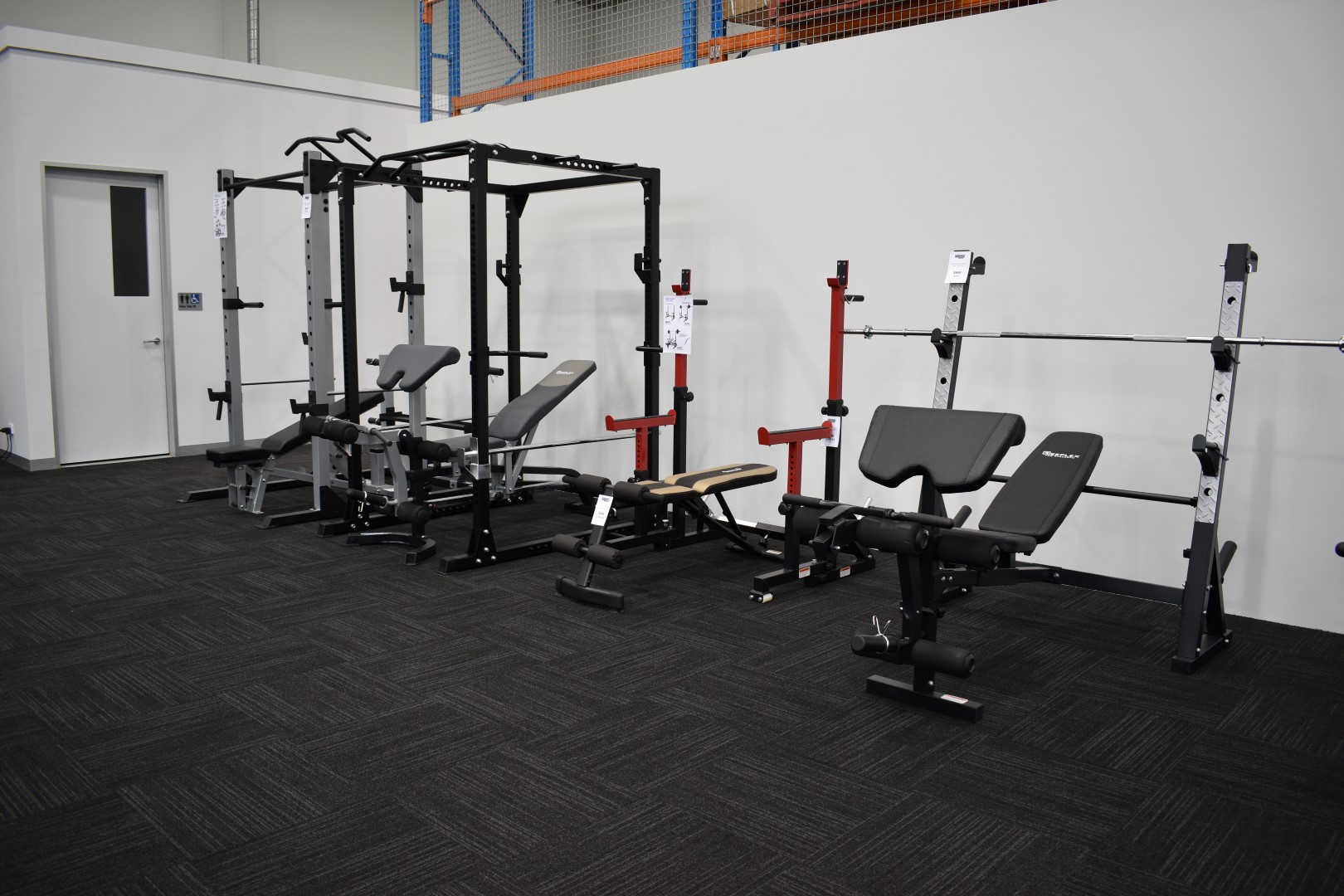
How to Choose The Right Weight Storage Dumbbell Rack for Your Home Gym
Choosing the right power rack for your home gym can make all the difference in your workout routine. Not only does a power rack provide safety and support during heavy lifts, but it also offers versatility and options for various exercises. Whether you have a dedicated home gym or a garage setup, having a reliable power rack is essential for maximizing your strength training potential.
In this guide, we will walk you through everything you need to know about selecting the best weight rack for your needs. From understanding the different types of power racks available to considering factors like size, weight capacity, and additional features, we’ve got you covered. Get ready to take your home gym workouts to the next level with the perfect power rack that suits your goals and space.
Factors to Consider: Selecting the Ideal Dumbbell Weight Rack
Different Types of Squat Racks
There are various options for gym equipment available in the market. Some popular types of squat racks include power racks, half racks, and profile racks. Power racks provide maximum stability and safety with their four vertical posts and adjustable safety bars. Half racks offer a more compact design while still providing essential features for squatting exercises. Profile racks are an excellent choice for those with limited space as they can be folded against the wall when not in use.
Key Factors to Consider before Shopping Home or Commercial Weight Storage Rack
To ensure you select the ideal squat rack for your home gym, there are a few key factors you should consider:
-
Fitness Goals and Requirements:
-
Determine your specific fitness goals and the type of exercises you plan to do on the squat rack.
-
Consider whether you need additional attachments or accessories like pull-up bars or dip handles.
-
Space Availability:
-
Measure the available space in your home gym to determine what size and style of squat rack will fit comfortably.
-
Keep in mind that some squat racks require extra clearance around them for safe usage.
-
Weight Capacity:
-
Check the weight capacity of each squat rack option to ensure it can support your lifting goals.
-
Take into account both your current strength level and any potential future progressions.
-
Budget:
-
Set a budget range before starting your search to narrow down your options.
-
Compare prices across different brands and models while considering their features and high-quality.
By carefully considering these factors, you’ll be able to choose a squat rack that aligns with your fitness goals, fits within your space constraints, accommodates your weightlifting needs, and suits your budget.
Read Also: Best Full-Body Workouts Using Squat Racks
Important Considerations: Choosing an Exercise Dumbbell Rack for Your Fitness Training Needs
Stability and Durability
One of the most important factors to consider is its stability and durability. You want a squat rack that can withstand heavy weights without wobbling or tipping over. Look for racks made from sturdy materials like steel, as they offer better stability and durability. Check if the rack has a wide base or anchoring options for added stability.
Adjustability and Versatility
Another crucial aspect to evaluate when choosing a squat rack is its adjustability and versatility features. A good squat rack should allow you to adjust the height of the barbell hooks and safety spotter arms to accommodate different exercise variations and body sizes. This ensures that you can perform squats comfortably and safely. Some squat stands even come with additional attachments like pull-up bars or dip handles, adding versatility to your workouts.
Space Limitations and Storage Options
Consider the available space in your home gym before purchasing a weight rack. Measure the area where you plan to place it to ensure it fits properly. If you have limited space, opt for compact squat stands that don’t take up much room but still provide adequate support during squats. Think about storage options when not in use. Some squat racks are foldable or have removable parts, making them easier to store away when not in use.
Safety and Support: Attachments and Accessories of Weight Plate Racks
Safety should be a top priority. That’s why it’s crucial to choose the right weight rack that offers the necessary support and safety features. Let’s explore some key considerations when selecting attachments and accessories for your weight rack.
Exploring Safety Features
One of the first things you should look for in a weight rack is the availability of safety features such as spotter arms, safety bars, or straps. These attachments provide an extra layer of protection during heavy lifts, ensuring that you can push yourself without compromising your safety. Spotter arms are adjustable bars that can catch the weight if you fail to complete a rep, while safety bars or straps act as a backup support system.
Understanding Additional Accessories of Weight Racks
In addition to safety features, there are other accessories that can enhance your workouts and make your weight rack more versatile. Consider investing in equipment like dip bars, pull-up bars, or even attachment rings. These additions allow you to perform a wider range of power racks exercises and target different muscle groups effectively.
Importance of Proper Installation and Maintenance
No matter how many safety features or accessories your weight rack has, it won’t be effective if not installed correctly or properly maintained. Ensure that you follow the manufacturer’s instructions precisely during installation to ensure stability and durability. Regularly inspect welds for any signs of wear or damage and tighten any loose bolts or pins to keep your gym rack secure.
Remember, customer service plays a vital role too! Check reviews from other customers regarding their experience with the product’s quality, durability, ease of use, and customer service provided by the manufacturer.
By considering these factors when choosing attachments and accessories for your weight rack, you’ll create a safer environment for your workouts while maximizing its functionality.
Measuring Width, Depth, and Height – Deluxe Vertical Tower Stand or Horizontal Racks
To choose the right weight rack for your home gym, you need to consider the dimensions and fitment. This involves measuring the width, depth, and height requirements of different models to ensure they will fit properly in your available space.
Determining the available space in your home gym for the weight rack
Before you start shopping for a weight rack, it’s important to assess the available space in your home gym. Measure the area where you plan to place the rack, taking into account any spatial constraints such as walls or other equipment nearby.

Measuring width, depth, and height requirements of different models
Once you know how much space you have, it’s time to measure the width, depth, and height requirements of different weight rack models. Check product specifications provided by manufacturers to find these measurements. Pay attention to the units used (millimeters or meters) and make sure they match your needs.
Ensuring proper fitment based on ceiling height or other spatial constraints
Fitment is crucial when choosing a weight rack. Consider factors like ceiling height or any other spatial constraints that may affect installation. Ensure there is enough clearance between the top of the rack and your ceiling so that you can perform exercises comfortably without hitting your head.
To summarize:
-
Determine the available space in your home gym before buying a weight rack.
-
Measure the width, depth, and height requirements of different models.
-
Ensure proper fitment based on ceiling height or other spatial constraints.
Remember that finding a weight rack that fits within your available space is essential for creating an efficient and safe workout environment at home.
Read Also: The 5 Best Power Racks for Your Home and Gym in 2022!
Weight Capacity: Ensuring Proper Load Limit
Understanding weight capacity ratings on squat racks
One of the most crucial factors to consider is its weight capacity. The weight capacity refers to the maximum amount of weight that the rack can safely support. It’s important to understand the weight capacity ratings provided by manufacturers to ensure you select a rack that can handle your lifting needs.
Matching weight capacity with your current strength level
Before making a purchase, assess your current strength level and determine the amount of weight you typically lift during your workouts. It’s essential to choose a weight rack with a capacity that matches or exceeds this amount. Selecting a rack with insufficient weight capacity may compromise safety and limit your ability to progress in your training.
Considering future progressions to avoid outgrowing the equipment
While it’s crucial to match the weight capacity with your current strength level, it’s equally important to consider future progressions in your training. As you continue with your weight training regimen, there is a high probability that you will increase the amount of weight you lift over time. To avoid outgrowing the equipment too quickly, opt for a rack with a higher weight capacity than what you currently require.
Making an Informed Decision for Your Olympic Barbell Power Rack
CoYou now have a solid understanding of the factors to consider when choosing the right weight rack for your home gym. By taking into account important considerations such as your specific needs, safety features, dimensions, and weight capacity, you are well on your way to finding the perfect fit for your fitness journey.
Now that you’re armed with this knowledge, it’s time to take action and make a confident decision. Assess your requirements and preferences, keeping in mind the space available in your home gym and the types of exercises you plan to perform. Remember, just like finding the perfect workout routine takes time and effort, so does selecting the ideal gym equipment and power racks at Dynamo Fitness Equipment in Australia. So don’t rush; take your time to research different options and read reviews from reliable sources. With careful consideration, you’ll be one step closer to creating an efficient and effective workout space that inspires you to reach new heights.
FAQs about Heavy Duty Standard Weight Rack
What is the difference between a squat rack and a power rack?
A squat rack typically consists of two upright posts with adjustable J-hooks for holding a barbell during squats or other similar exercises. On the other hand, a power rack (also known as a power cage) offers additional safety features such as spotter arms and safety pins that can catch the barbell if you fail to complete a lift. Power racks provide more versatility by allowing exercises like bench presses and pull-ups.
Can I use resistance bands with my weight rack?
Yes! Many weight racks come with attachments or accessories that allow you to incorporate resistance bands into your workouts. These bands can add extra resistance throughout various exercises, helping you build strength while challenging different muscle groups.
How much space do I need for a weight rack?
The amount of space required depends on the dimensions of the weight rack itself. Measure both its width and depth before purchasing one to ensure it fits comfortably within your designated area. Consider leaving some extra space around the rack for maneuverability during exercises.
What is the weight capacity of a weight rack?
The weight capacity varies depending on the specific model and brand. It’s crucial to choose a weight rack that can handle the maximum load you plan to lift. Ensure that the weight capacity exceeds your current strength level, allowing room for progression as you advance in your fitness journey.
Can I assemble a weight rack on my own?
While it’s possible to assemble a weight rack on your own, it’s recommended to have someone assist you due to the size and weight of certain components. Following the manufacturer’s instructions carefully will help ensure proper assembly and safety. If you’re unsure or uncomfortable with assembling it yourself, consider hiring a professional for assistance.
